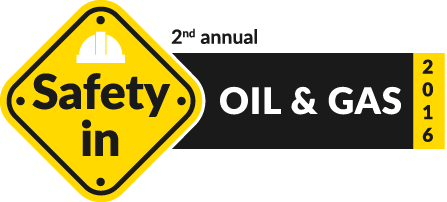Wednesday 2 March 2016
Go to Post-Conference In-depth Learning Session
08:30 | Welcome coffee
08:50 | Opening remarks from the Chair
Scott Osborne, General Manager, Drug and Alcohol Testing Institute
Applying new safety and human factor practices to cope with challenges of a new era
09:00 | KEYNOTE ADDRESS: Analysing the emerging safety trends and challenges and their impact on our organisation
- Understanding human error in the context of work, and the utmost importance of improved work design
- Applying a new approach that reflects the latest human factors/ergonomics research applicable to safety
- Identifying and implementing system safety
Sidney Dekker, Professor, School of Humanities, Griffith University
Exploring new industry approaches and applying them to your process safety and HSE management strategies
09:40 | The Fundamentals of a Successful Alcohol and Other Drugs Program
- National Drug Usage Trends in the Australian Workplace
- Policy Essentials
- The Australian Framework – Alcohol, Oral Fluid and Urine Standards
- Privacy, Fairness and Transparency
- What do successful programs look like?
Darron Brien, Managing Director, Drug and Alcohol Testing Institute
10:10 | Overviewing the benefits of increasing process safety relevance in your organisation
- Understanding the weight of process safety in your organisation and how to improve it through good practice
- Assessing how the most efficient operations in resources are addressing incident prevention, preparedness and immediate responses
- Designing a proactive strategy to continuously advance process safety and how this can have a positive impact in your business
Andrew Fergusson, Safety and Risk Engineering Manager, Worley Parsons
10:40 | Morning tea
11:10 | CASE STUDY: How to establish an effective Major Accident Prevention (MAP) Program
- An overview of Clough’s MAP Program
- How establishing clear communication and engaging with stakeholders and operators can support the success of the program
- Ensuring operators and contractors both play a role in collaborating and achieving overall accident prevention
Roberta Selleck, Health, Safety, Security and Environment Manager - Corporate, Clough
Achieving excellence in your risks and process safety management through continuous improvement strategies
11:40 | Optimising safety in the work place by improving risk assessment programs
- Recognising and acknowledging that the people are as important as the process (HAZOP, SIL, LOPA)
- Identifying those problem participants early and preventing them from derailing your safety programs
- Ensuring that everyone works together to get the best safety outcome
Jan Hayes, Associate Professor, RMIT University, and Member of the Advisory Board, NOPSEMA
Alf Sanzo, Managing Director, GPA Engineering
12:10 | CASE STUDY: The Alaskan tundra vs the Aussie bush – a tale of two gas plants
- Sharing of a case study from the design of two gas plants in two different extremes
- Understanding the implications of severe weather conditions for safety managers and processes and the most effective ways to address this challenge
- Identifying the lessons learned in Alaska that were successfully used to streamline the establishment of safety processes in Australia
- Applying these experiences to your project
Steve Cooper, Hydrocarbons Select Manager, Worley Parsons
12:40 | Networking lunch
13:40 | PANEL DISCUSSION: Assessing how regulators, emergency services and organisations can work together to ensure an incident-free environment
- Developing and managing specific approaches which underpin the evidence base for work, health and safety activities
- How responsive regulations applies to work health and safety regulation and environment regulation
- Improving regulators, emergency services and organisations relationship to minimise the risks and impacts of hazard incidents
Panel Moderator:
Scott Osborne, General Manager, Drug and Alcohol Testing Institute
Panellists:
Peter Thorning, Manager Research Partnerships, Workplace Health and Safety Queensland
Shoena Messner, Director, Hazardous Industries and Chemicals Branch, Office of Industrial Relations – Queensland Treasury
Technology advancement – reducing vulnerability and exposure to risks or increasing human factor issues?
14:10 | An overview of the future risks associated with human and automated control
- Assessing recent findings on safety automated controls and planning to prepare for the future
- Understanding risk in a new era of safety management
- Leveraging technology to avoid and prevent future human risks
Maureen Hassall, Associate Professor, The University of Queensland
Steward Black, Operations Engineer, Arrow Energy
14:40 | Afternoon tea
15:10 | Developing methodologies to manage and measure your organisation’s vulnerability to risks
- Ensuring clarity throughout an organisation of the risk-profile of a major hazard business
- Identifying the most vulnerable aspects of process safety management systems based on risk profile
- Setting targeted KPIs for the most vulnerable areas and developing a risk control management strategy
Tony Pooley, Associate Professor in Risk, University of South Australia, and Director, Principle Seven
15:40 | ADVISORY PANEL CLOSING ROUNDTABLE: Overcoming the challenge of adopting a new mindset to advanced technology at the same time as considering human factor risks
This session considers the opportunities offered by the constantly evolving technology and the challenges it represents to human factors risks. The events advisory panel will facilitate a roundtable discussion to discuss how organisations must prepare for future opportunities and threats in HSE and process safety management strategies.
- Looking forward the next 5 to 10 years – what trends in new technologies are and how to prepare to them
- What tools will be required to address the human factors and new technology issues?
- How should companies adopt a new mindset to prepare for new technologies and address future human factors issues?
Jan Hayes, Associate Professor, RMIT University, and Member of the Advisory Board, NOPSEMA
16:10 | Closing remarks from the Chair and drawing of the lucky door prize!
16:20 | End of Day Two and close of the conference
